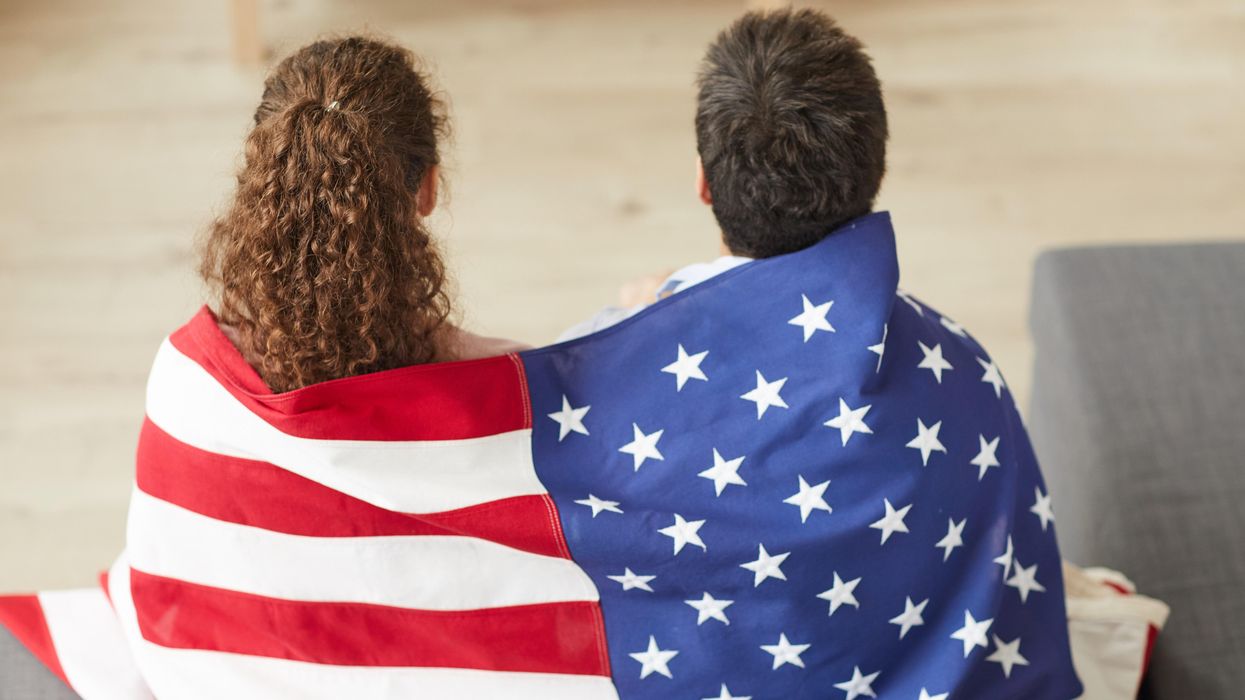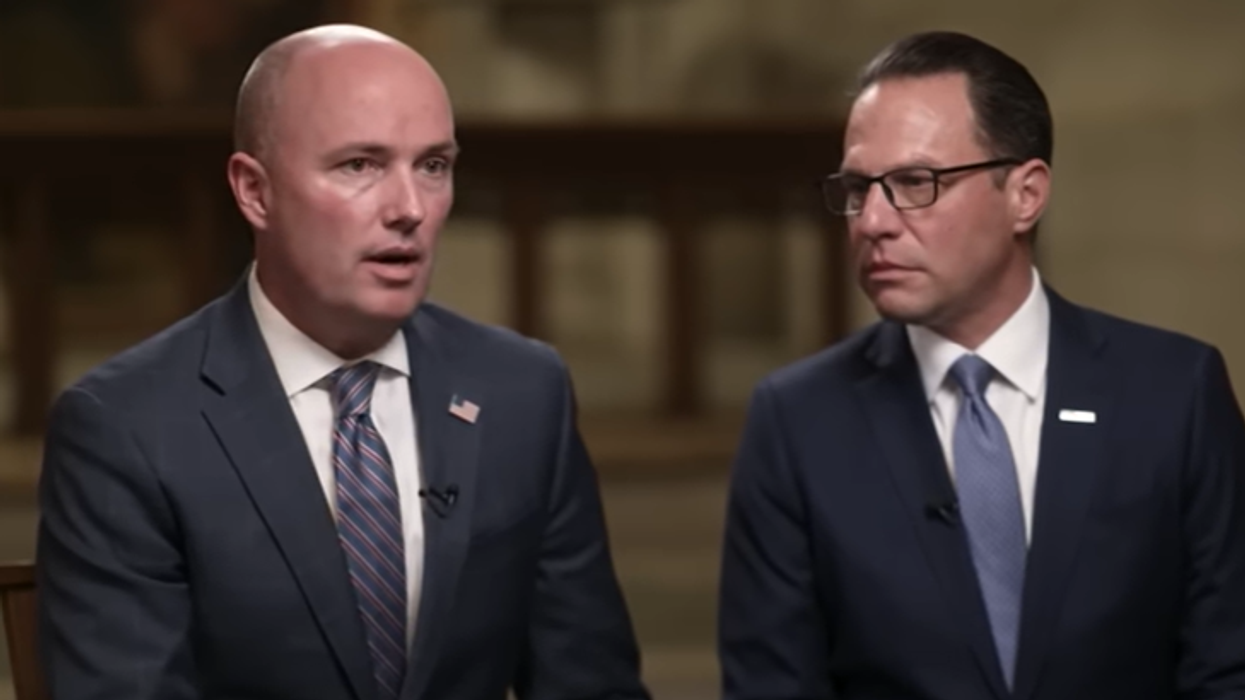Introduction
A large body of research shows that Americans hold overly negative distortions of those across the political spectrum. These misperceptions—often referred to as "Perception Gaps"—make civil discourse harder, since few Americans are eager to engage with people they believe are ideologically extreme, interpersonally hostile, or even threatening or inferior. When potential disagreement feels deeply uncomfortable or dangerous, conversations are unlikely to begin.
Correcting these distortions can help reduce barriers to productive dialogue, making Americans more open to political conversations.
Reducing barriers is part of a broader category of civil discourse motivation. Additional ways to motivate involve showing the attractiveness of engaging across the political spectrum. We think of two broad categories of civil discourse motivation: "positive motivation" (increasing the desire to participate), and "lowering barriers" (reducing what makes participation feel hard). Motivation is vital to getting Americans to engage with each other.
Perception Gap corrections mostly address the latter category of lowering barriers, but both categories are useful to support healthier discourse. In this article, we highlight a couple of other ways to lower barriers, and we briefly explore methods of positive motivation.
Our organization, More Like US, focuses on college campuses, which are especially important places to do this work, particularly given the heightened tensions following the violence in the Middle East that began on October 7, 2023.
Americans Have Overly Negative Distortions (Perception Gaps) of Each Other
The data shows that Americans view members of the other political party overly negatively. As shown below, this includes exaggerated perceptions of ideological extremity, interpersonal hostility, inferiority that can exacerbate stereotypes, and even a willingness to use violence.
- Ideological extremity: According to More in Common’s original Perception Gap study, Americans believe that approximately 55% of individuals in the opposing political party hold extreme views, whereas the actual number was closer to 30%.
- Interpersonal hostility: Also from More in Common research, only 12% of both Republicans and Democrats say it is fine to treat those in the other political party with hostility during political conversations. However, both Republicans and Democrats think more than 40% of those in the other party believe that is acceptable behavior.
- Inferiority that can exacerbate stereotypes: The Pew Research Center found that the majority of Americans see those in the other party as more closed-minded, dishonest, immoral, and unintelligent. To some extent, the findings likely also indicate some degree of stereotyping: Democrats have been more likely to describe Republicans as closed-minded (potentially corresponding to stereotypes of backwardness or excessive adherence to tradition), and Republicans have been more likely to describe Democrats as immoral (potentially corresponding to stereotypes of a lack of belief in God or support for religion).
- Willingness to use violence: The Polarization Research Lab surveys hundreds of Americans every week. One of its questions, which has now reached over 150,000 Americans, shows greatly exaggerated views of the other side’s support for political violence. Less than 4% of both Democrats and Republicans support throwing rocks at peaceful protesters from the other party that result in a head wound. Yet those in both parties think about 45% of those in the other party would support such an action, a difference of more than 40 percentage points.
Correcting Perception Gaps Lowers Barriers to Political Conversations
If someone sees those on the other side as more extreme, interpersonally hostile, inferior, stereotypical, and/or threatening than they actually are, it is understandable that they would hesitate to engage. These highly negative and exaggerated impressions exacerbate a core psychological barrier to dialogue: intergroup anxiety.
More in Common’s "The Connection Opportunity" report identifies intergroup anxiety as the single most important factor reducing willingness to engage across political lines. Perception Gaps, our tendency to assume the worst about political outgroups, fuel that anxiety.
Intergroup anxiety is likely to be high when people perceive that a person from “the other side” is likely to have extreme and completely different views, act in aggressive ways (e.g., combative, dismissive, unreasonable), and possibly be morally or cognitively inferior. Given these assumptions, simply opting out of conversations can feel like a safe choice.
But when these misperceptions are corrected—when people learn that their peers are more ideologically similar, open and respectful, and generally better people than expected—these barriers begin to lower. The imagined risks shrink, and the sense of permission to engage grows.
Conversations can then seem doable, rather than seeming like daunting tasks requiring deep “bravery” or “courage” (as some groups in this space seem to suggest).
Lowering these barriers does not require deep shifts in worldview. Relatively modest corrections, like learning that others are less extreme or hostile than assumed, can reduce anxiety and make conversations feel more approachable.
Conversation Motivation Includes Both "Positive Motivation" and "Lowering Barriers"
To better understand how to encourage political conversations, it helps to distinguish between two types of motivation: the desire to do something and the reduction of obstacles that discourage it.
Using a sports example, a child’s aspiration to emulate their favorite baseball player represents an increased desire to participate, what we call positive motivation. Meanwhile, severe outdoor allergies constitute an obstacle. Providing allergy medication or immunotherapy would thus reduce the obstacle, what we call lowering barriers. Both additional positive motivation and lowered barriers increase the likelihood of participation.
As explained above, correcting Perception Gaps is a clear example of lowering barriers.
Other methods can also lower barriers. For instance, teaching dialogue skills overcomes a major concern about having the capacity to engage well. Opportunities to model good civil discourse can also reduce hesitancy to engage when students see others successfully doing so.
Then there are approaches that can encourage participation by increasing interest—what we call positive motivation.
At least among college students, one strategy is to highlight that students often enjoy these conversations more than they expect. Surveys from Unify America’s Civic Gym suggest that cross-partisan discussions can be energizing and rewarding. Emphasizing these outcomes can spark interest.
Another potential area of positive motivation involves emphasizing broad and long-term benefits (e.g., attractiveness to employers, ability to handle social situations).
Finally, messages encouraging values (e.g., curiosity, open-mindedness) can provide positive motivation to some. From some of the earliest studies in psychology, it has been shown that people generally want to see themselves as “good.” If this “goodness” means being, say, curious and open-minded, then some can change their behaviors to align with this conception of desirable attitudes and behaviors. Some advocates of curiosity in terms of cross-ideological dialogue include Mónica Guzmán and The Viewpoints Project.
Some approaches can both lower barriers and increase positive motivation. For instance, as mentioned above, modeling effective civil discourse can reduce hesitancy. And for some, it can actually inspire and be a source of positive motivation when they want to be like those they see successfully conversing with each other.
More Like US Seeks to Increase Motivation for Political Conversations on College Campuses
Our organization, More Like US, has a focus on college campuses, especially to motivate civil discourse. Our two active projects in fall 2025 can improve motivation to engage:
- Let’s Be SVL: Starting at Vanderbilt University in fall 2025, this effort includes messaging designed to address the misperceptions many students have of one another that reduce motivation to engage in political conversations. The mnemonic SVL, pronounced like civil, can also motivate conversations by giving students simple, repeatable guidance about how to successfully dialogue across the political spectrum: share Stories, relate to others’ Values, and closely Listen.
- Arts for America: This is a workshop for college students to use their talent in the Arts to better portray fellow Americans across the political spectrum. "Arts" is broad, including audio, video, visual art, stories, live performances, games, social media posts, and more. The content the students create can reduce misperceptions of each other across the political spectrum, lowering barriers to engage.
More Like US is also planning future efforts to shift norms and increase motivation to have civil discourse across politics on college campuses. The National Social Norms Center (NSNC) at Michigan State University and its predecessors have worked for over two decades to correct misperceptions about dangerous health behaviors, such as binge drinking on campus. They have found that students overestimate how much their fellow students drink; once these misperceptions are corrected, students drink less. Now, More Like US and NSNC seek to use the same logic to correct misperceptions and problematic social norms that inhibit dialogue on campus, such as by helping students see that more of their peers across politics are more open to dialogue than expected. When conversations feel both socially supported and personally manageable, more students are likely to take part.
Conclusion
When Americans assume that those who disagree with them are far more extreme or hostile than they really are, dialogue may never even begin. These misperceptions feed intergroup anxiety. Correcting these misperceptions reduces that anxiety, lowering a major barrier to engagement.
Learning dialogue skills and seeing others effectively model discourse can also reduce hesitation to engage.
Still, lowering barriers by reducing anxiety is only part of the equation. Motivation also depends on positive motivation, including highlighting surprising enjoyment, long-term benefits, and values that encourage engaging with one another.
All of these motivational tools can unlock conversations that may not have happened otherwise.
James Coan is the co-founder and executive director of More Like US. Coan can be contacted at James@morelikeus.org
Imre Huss is a current intern at More Like US.



















